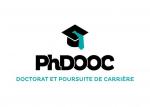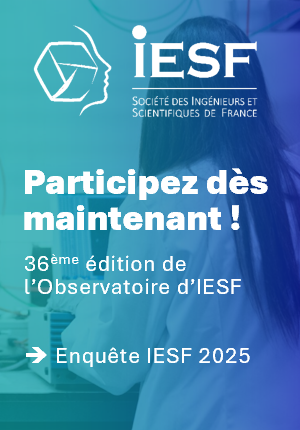Imagerie photoacoustique dans le domaine fréquentiel d'absorbeurs dichroïques // Frequency-domain photoacoustic imaging of dichroic absorbers
|
ABG-131112
ADUM-65087 |
Thesis topic | |
| 2025-04-16 | Public funding alone (i.e. government, region, European, international organization research grant) |
Université Grenoble Alpes
Saint-Martin d'Hères Cedex - France
Imagerie photoacoustique dans le domaine fréquentiel d'absorbeurs dichroïques // Frequency-domain photoacoustic imaging of dichroic absorbers
- Computer science
Polarisation optique, Imagerie Biomédicale
Optical polarization, Biomedical Imaging
Optical polarization, Biomedical Imaging
Topic description
L'imagerie photoacoustique est une modalité d'imagerie biomédicale relativement récente, basée sur l'émission d'une onde acoustique suite à l'absorption de la lumière. Ses deux principales caractéristiques sont sa sensibilité spécifique à l'absorption optique (par opposition à la diffusion) et sa résolution en profondeur dans les tissus biologiques. L'imagerie optique en profondeur dans les tissus est très limitée en termes de résolution en raison de la diffusion multiple de la lumière: la lumière visible peut pénétrer plusieurs centimètres dans les tissus biologiques, mais ne peut être focalisée, ce qui empêche une imagerie optique haute résolution au-delà de quelques centaines de microns. Cependant, contrairement à la lumière visible, les ultrasons dans la gamme des MHz ne diffusent que faiblement dans les tissus mous et peuvent donc être focalisés à grande profondeur (plusieurs centimètres), comme l'illustre l'imagerie ultrasonore couramment réalisée en clinique. Reposant sur la détection acoustique du son émis par des absorbeurs de lumière, l'imagerie photoacoustique à grande profondeur fournit des images optiques avec une résolution acoustique (généralement de quelques dizaines à quelques centaines de microns). À faible profondeur, la focalisation de la lumière offre une résolution microscopique, qui constitue le contexte du sujet de thèse proposé.
Les signaux photoacoustiques sont généralement générés par l'absorption de la lumière par les globules rouges, qui comptent parmi les plus puissants absorbeurs de lumière visible de l'organisme. Dans ce projet de doctorat, nous étudions une nouvelle approche permettant de détecter spécifiquement une classe très particulière d'absorbeurs optiques, les absorbeurs dichroïques, dont l'absorption dépend de la polarisation de la lumière. Par exemple, les absorbeurs dichroïques linéaires présentent des coefficients d'absorption différents selon la direction de polarisation de la lumière polarisée linéairement. Les plaques amyloïdes, susceptibles de se former dans le cerveau lors de maladies neurodégénératives comme la maladie d'Alzheimer, sont un exemple de tels absorbeurs intéressants en imagerie biomédicale. Des travaux récents ont montré qu'il est possible d'imager sélectivement le dichroïsme linéaire en utilisant une séquence de deux impulsions nanosecondes de lumière polarisée linéairement avec polarisation croisée, par simple formation d'une image différentielle révélant les absorbeurs dichroïques linéaires. De plus, il est possible d'imager non seulement la quantité de dichroïsme linéaire, mais aussi son orientation.
Cependant, cette approche en lumière pulsée est limitée en termes de sensibilité car des signaux forts sont également générés par des absorbeurs non dichroïques, créant un fort signal de fond sur lequel il est généralement difficile de détecter une faible absorption dichroïque. Récemment, nous avons réalisé une expérience de preuve de concept montrant qu'il est possible de générer des signaux photoacoustiques uniquement à partir d'absorbeurs dichroïques, c'est-à-dire sans signal provenant des absorbeurs de fond non dichroïques, en modulant la polarisation de la lumière continue. Les objectifs du projet de doctorat comprennent: 1) concevoir et construire un microscope photoacoustique pour imager spécifiquement les absorbeurs dichroïques, 2) comprendre, modéliser et caractériser les performances de l'instrument (sensibilité, résolution, contraste), 3) comparer ces performances aux approches en lumière pulsée, 4) appliquer la technique à des échantillons d'intérêt biologique.
------------------------------------------------------------------------------------------------------------------------------------------------------------------------
------------------------------------------------------------------------------------------------------------------------------------------------------------------------
Photoacoustic imaging is a relatively new biomedical imaging modality based on the emission of an acoustic wave following light absorption. The two main features of photoacoustic imaging are its specific sensitivity to optical absorption (as opposed to scattering) and its resolution deep into biological tissue. Optical imaging deep in tissue is very limited in terms of resolution due to multiple scattering of light: diff use visible light can penetrate several centimeters into biological tissue but cannot be focused, preventing high resolution optical imaging at depths beyond a few hundred microns. However, unlike visible light, ultrasound in the MHz range is only weakly scattering in soft tissue and can therefore be focused at large depths (several centimeters), as illustrated by ultrasound imaging routinely performed in clinics. Because it relies on acoustic detection of sound emitted by light absorbers, photoacoustic imaging at large depth provides optical images with acoustic resolution (typically a few tens to a few hundred microns). For shallow depth, light focusing provides microscopic resolution, which is the context of the proposed PhD topic.
Generally photoacoustic signals are generated from the absorption of light by red blood cells, which are amongst the stronger absorbers in the body for visible light. In this PhD project, our goal is investigating a new approach to specifically detect a very particular class of optical absorbers, namely dichroic absorber, whose absorption is dependent on the polarization of light. For instance, linear dichroic absorbers have different absorption coefficients depending on the polarization direction of linear polarized light. Example of such absorbers of interest in the context of biomedical imaging are amyloid plaques, which may form in the brain with neurodegenerative diseases like Alzheimer. Recent works have shown that it is possible to selectively image linear dichroism by use of a sequence of two different nanosecond pulses of linearly polarized light with cross-polarization, by simply forming a differential image to reveal linear dichroic absorbers. Moreover, it is possible not only to image the amount of linear dichroism, but also to image the dichroism orientation.
However, this approach with pulsed light is limited in terms of sensitivity as strong signals are also generated from non-dichroic absorbers, creating a strong background signal over which it is generally difficult to detect weak dichroic absorption. Recently, we performed a proof-of-concept experiment showing that it is possible to generate photoacoustic signals only from dichroic absorbers, i.e. with no signal from the non-dichroic background absorbers, by modulation the light polarization of continuous light. The objectives of the PhD project include: 1) to design and build a photoacoustic microscope to image specifically dichroic absorbers, 2) to understand, model and characterize the performance of the instrument (sensitivity, resolution, contrast), 3) to compare theses performances to approaches with pulsed light, 4) to apply the technique to samples of biological interests.
------------------------------------------------------------------------------------------------------------------------------------------------------------------------
------------------------------------------------------------------------------------------------------------------------------------------------------------------------
Début de la thèse : 01/10/2025
WEB : https://liphy.univ-grenoble-alpes.fr/fr/recherche/equipes/optima-optique-et-imageries
Les signaux photoacoustiques sont généralement générés par l'absorption de la lumière par les globules rouges, qui comptent parmi les plus puissants absorbeurs de lumière visible de l'organisme. Dans ce projet de doctorat, nous étudions une nouvelle approche permettant de détecter spécifiquement une classe très particulière d'absorbeurs optiques, les absorbeurs dichroïques, dont l'absorption dépend de la polarisation de la lumière. Par exemple, les absorbeurs dichroïques linéaires présentent des coefficients d'absorption différents selon la direction de polarisation de la lumière polarisée linéairement. Les plaques amyloïdes, susceptibles de se former dans le cerveau lors de maladies neurodégénératives comme la maladie d'Alzheimer, sont un exemple de tels absorbeurs intéressants en imagerie biomédicale. Des travaux récents ont montré qu'il est possible d'imager sélectivement le dichroïsme linéaire en utilisant une séquence de deux impulsions nanosecondes de lumière polarisée linéairement avec polarisation croisée, par simple formation d'une image différentielle révélant les absorbeurs dichroïques linéaires. De plus, il est possible d'imager non seulement la quantité de dichroïsme linéaire, mais aussi son orientation.
Cependant, cette approche en lumière pulsée est limitée en termes de sensibilité car des signaux forts sont également générés par des absorbeurs non dichroïques, créant un fort signal de fond sur lequel il est généralement difficile de détecter une faible absorption dichroïque. Récemment, nous avons réalisé une expérience de preuve de concept montrant qu'il est possible de générer des signaux photoacoustiques uniquement à partir d'absorbeurs dichroïques, c'est-à-dire sans signal provenant des absorbeurs de fond non dichroïques, en modulant la polarisation de la lumière continue. Les objectifs du projet de doctorat comprennent: 1) concevoir et construire un microscope photoacoustique pour imager spécifiquement les absorbeurs dichroïques, 2) comprendre, modéliser et caractériser les performances de l'instrument (sensibilité, résolution, contraste), 3) comparer ces performances aux approches en lumière pulsée, 4) appliquer la technique à des échantillons d'intérêt biologique.
------------------------------------------------------------------------------------------------------------------------------------------------------------------------
------------------------------------------------------------------------------------------------------------------------------------------------------------------------
Photoacoustic imaging is a relatively new biomedical imaging modality based on the emission of an acoustic wave following light absorption. The two main features of photoacoustic imaging are its specific sensitivity to optical absorption (as opposed to scattering) and its resolution deep into biological tissue. Optical imaging deep in tissue is very limited in terms of resolution due to multiple scattering of light: diff use visible light can penetrate several centimeters into biological tissue but cannot be focused, preventing high resolution optical imaging at depths beyond a few hundred microns. However, unlike visible light, ultrasound in the MHz range is only weakly scattering in soft tissue and can therefore be focused at large depths (several centimeters), as illustrated by ultrasound imaging routinely performed in clinics. Because it relies on acoustic detection of sound emitted by light absorbers, photoacoustic imaging at large depth provides optical images with acoustic resolution (typically a few tens to a few hundred microns). For shallow depth, light focusing provides microscopic resolution, which is the context of the proposed PhD topic.
Generally photoacoustic signals are generated from the absorption of light by red blood cells, which are amongst the stronger absorbers in the body for visible light. In this PhD project, our goal is investigating a new approach to specifically detect a very particular class of optical absorbers, namely dichroic absorber, whose absorption is dependent on the polarization of light. For instance, linear dichroic absorbers have different absorption coefficients depending on the polarization direction of linear polarized light. Example of such absorbers of interest in the context of biomedical imaging are amyloid plaques, which may form in the brain with neurodegenerative diseases like Alzheimer. Recent works have shown that it is possible to selectively image linear dichroism by use of a sequence of two different nanosecond pulses of linearly polarized light with cross-polarization, by simply forming a differential image to reveal linear dichroic absorbers. Moreover, it is possible not only to image the amount of linear dichroism, but also to image the dichroism orientation.
However, this approach with pulsed light is limited in terms of sensitivity as strong signals are also generated from non-dichroic absorbers, creating a strong background signal over which it is generally difficult to detect weak dichroic absorption. Recently, we performed a proof-of-concept experiment showing that it is possible to generate photoacoustic signals only from dichroic absorbers, i.e. with no signal from the non-dichroic background absorbers, by modulation the light polarization of continuous light. The objectives of the PhD project include: 1) to design and build a photoacoustic microscope to image specifically dichroic absorbers, 2) to understand, model and characterize the performance of the instrument (sensitivity, resolution, contrast), 3) to compare theses performances to approaches with pulsed light, 4) to apply the technique to samples of biological interests.
------------------------------------------------------------------------------------------------------------------------------------------------------------------------
------------------------------------------------------------------------------------------------------------------------------------------------------------------------
Début de la thèse : 01/10/2025
WEB : https://liphy.univ-grenoble-alpes.fr/fr/recherche/equipes/optima-optique-et-imageries
Funding category
Public funding alone (i.e. government, region, European, international organization research grant)
Funding further details
Concours pour un contrat doctoral
Presentation of host institution and host laboratory
Université Grenoble Alpes
Institution awarding doctoral degree
Université Grenoble Alpes
Graduate school
220 EEATS - Electronique, Electrotechnique, Automatique, Traitement du Signal
Candidate's profile
Cette thèse en imagerie photo-acoustique étant principalement expérimentale, nous recherchons un(e) étudiant(e) attiré(e) par la réalisation et la conception de montage expérimentaux.
Une bonne compréhension de la physique des ondes (acoustiques et électromagnétiques) est nécessaire.
Avoir des notions sur la polarisation de la lumière et son formalisme (matrices de Jones et de Mueller) serait un plus .
La maitrise du logiciel MATLAB serait aussi un plus pour le pilotage de l'expérience et le traitement des signaux photo-acoustiques générés par l'absorption dichroïque.
Attention, au cours de la thèse, des expériences pourront être réalisées sur des échantillons biologiques vivants (par exemple des tendons de souris).
As this thesis in photoacoustic imaging is primarily experimental, we are seeking a student interested in conducting and designing experimental setups. A good understanding of wave physics (acoustic and electromagnetic) is required. A basic understanding of light polarization and its formalism (Jones and Mueller matrices) would be a plus. Knowledge of MATLAB software would also be beneficial for piloting the experiment and processing photoacoustic signals generated by dichroic absorption. Please note that during the thesis, experiments may be conducted on living biological samples (e.g., mouse tendons).
As this thesis in photoacoustic imaging is primarily experimental, we are seeking a student interested in conducting and designing experimental setups. A good understanding of wave physics (acoustic and electromagnetic) is required. A basic understanding of light polarization and its formalism (Jones and Mueller matrices) would be a plus. Knowledge of MATLAB software would also be beneficial for piloting the experiment and processing photoacoustic signals generated by dichroic absorption. Please note that during the thesis, experiments may be conducted on living biological samples (e.g., mouse tendons).
2025-05-30
Apply
Close
Vous avez déjà un compte ?
Nouvel utilisateur ?
More information about ABG?
Get ABG’s monthly newsletters including news, job offers, grants & fellowships and a selection of relevant events…
Discover our members
 PhDOOC
PhDOOC  Nokia Bell Labs France
Nokia Bell Labs France  ANRT
ANRT  Laboratoire National de Métrologie et d'Essais - LNE
Laboratoire National de Métrologie et d'Essais - LNE  CESI
CESI  ASNR - Autorité de sûreté nucléaire et de radioprotection - Siège
ASNR - Autorité de sûreté nucléaire et de radioprotection - Siège  Ifremer
Ifremer  Généthon
Généthon  Tecknowmetrix
Tecknowmetrix  ADEME
ADEME  CASDEN
CASDEN  SUEZ
SUEZ  MabDesign
MabDesign  TotalEnergies
TotalEnergies  MabDesign
MabDesign  Institut Sup'biotech de Paris
Institut Sup'biotech de Paris  Groupe AFNOR - Association française de normalisation
Groupe AFNOR - Association française de normalisation  ONERA - The French Aerospace Lab
ONERA - The French Aerospace Lab  Aérocentre, Pôle d'excellence régional
Aérocentre, Pôle d'excellence régional





